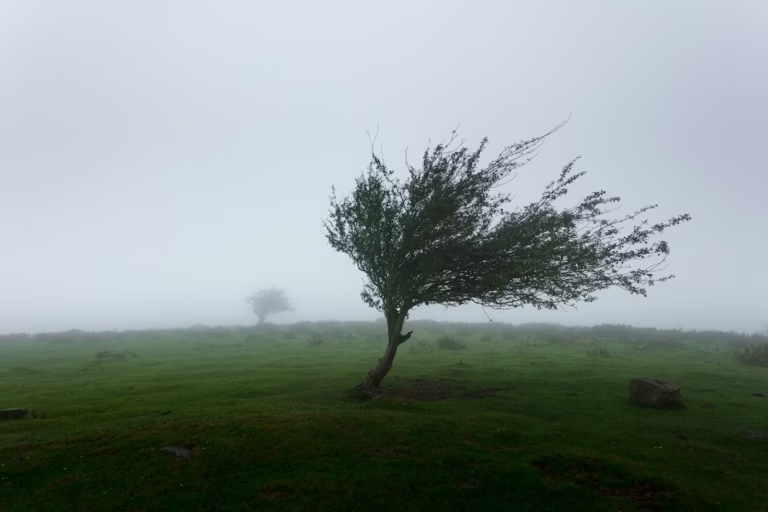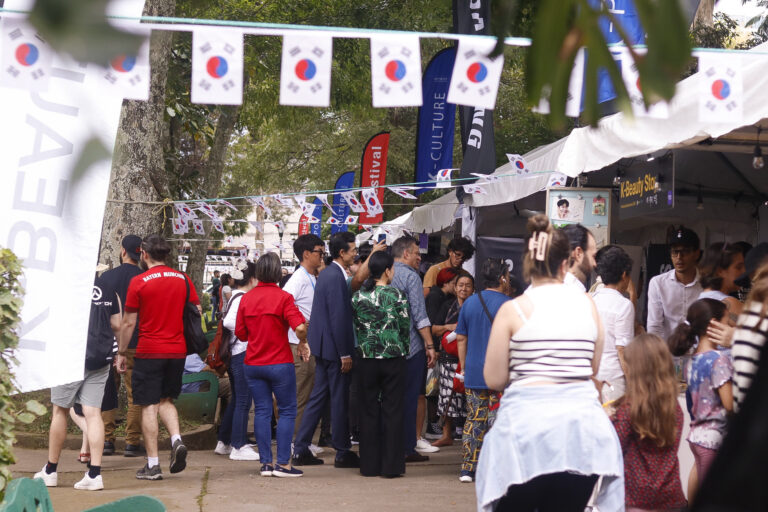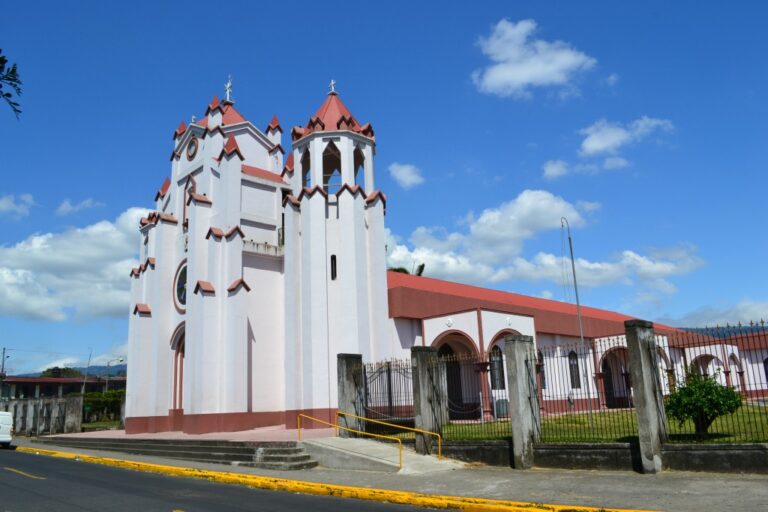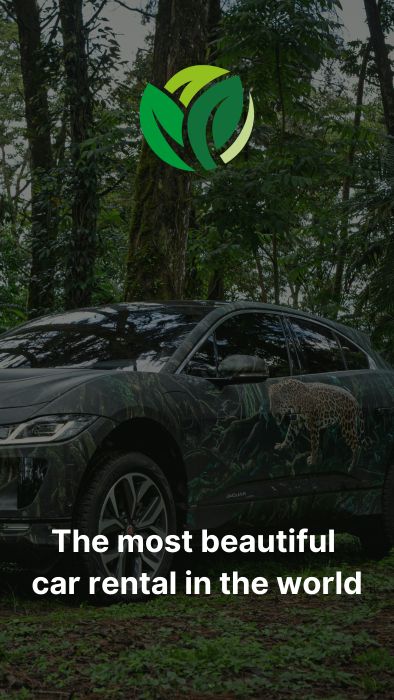Brief Presentation of the Simón Bolívar Zoo
The Simón Bolívar Zoo, located in the heart of San José, Costa Rica, was an iconic institution that played a fundamental role in biodiversity conservation and environmental education for over a century. Founded in 1921, the zoo evolved over the years to become an urban sanctuary for wildlife and a top-tier educational center.
With a rich history dating back to the early 20th century, the Simón Bolívar Zoo witnessed significant events in the history of Costa Rica. In its early days, the zoo was a small collection of native animals, but over time it expanded its scope to include species from around the world. Throughout the years, the zoo housed a wide variety of animals, from majestic jaguars and tree sloths to colorful macaws and capuchin monkeys.
In addition to its role in biodiversity conservation, the Simón Bolívar Zoo was also an important educational center. The zoo offered a variety of educational programs for both children and adults, including guided tours, workshops, and summer camps. Through these programs, the zoo sought to raise public awareness about the importance of wildlife conservation and promote responsible environmental behavior.
In recent decades, the Simón Bolívar Zoo underwent a series of significant changes. In 2012, the zoo underwent a multimillion-dollar renovation that included the construction of new animal habitats, an environmental education center, and a veterinary hospital. These improvements allowed the zoo to provide better care for the animals and offer a more enriching experience for visitors.
The Simón Bolívar Zoo was a national treasure, loved and appreciated by generations of Costa Ricans and tourists. It was a place where people could connect with nature, learn about wildlife, and experience the beauty and diversity of the natural world.
The zoo closed its doors on May 10, 2024, marking the end of a significant era in the history of conservation and environmental education in Costa Rica.

Location
Located in Barrio Amón, in the heart of San José, the Simón Bolívar Zoo was strategically positioned to facilitate access for both residents and visitors. Its exact address was Avenida 11, between streets 9 and 11, just north of the city center. The central location allowed visitors to combine their zoo visit with other cultural and tourist attractions in the Costa Rican capital.
Importance in Costa Rican Culture

The Simón Bolívar Zoo was not just a place where animals were displayed; it was an institution deeply rooted in Costa Rican history and culture. Since its opening, it played a crucial role in environmental education, teaching generations about the importance of conservation and respect for nature. Moreover, it was a refuge for endangered species and a center for wildlife research and rehabilitation.
The zoo was also a family and educational meeting point, where parents could teach their children about Costa Rica’s biodiversity and the need to protect it. Over the years, it hosted countless cultural and educational events, reinforcing its position as a symbol of the country’s commitment to environmental conservation.
Purpose of the Blog Post
The purpose of this blog post is to offer a detailed and enriching look at the Simón Bolívar Zoo, exploring its history, evolution, and contributions to Costa Rican society. Through this article, we aim to not only inform readers about the importance of the zoo but also inspire greater appreciation for the conservation and educational efforts that were made at this place. Additionally, we hope to motivate more people to remember and value the zoo’s legacy and actively participate in protecting Costa Rica’s biodiversity, continuing the spirit of conservation that the Simón Bolívar Zoo represented for over one hundred years.
History of the Simón Bolívar Zoo
Foundation and Early Years
Date of Foundation
The Simón Bolívar Zoo was founded in 1921, at a time when Costa Rica was beginning to stand out for its growing interest in nature conservation and environmental education. This institution arose as an initiative to promote knowledge and respect for the country’s wildlife, at a time when urbanization and agricultural expansion were beginning to affect the natural habitats of many species.
Historical Context of Costa Rica at that Time
In the 1920s, Costa Rica was undergoing a phase of transition and modernization. The country was advancing in the implementation of basic infrastructure and the expansion of public education. The creation of the zoo was part of these efforts to modernize and educate the population. The government and various civil organizations recognized the need to protect the country’s unique biodiversity and educate citizens about the importance of conservation.
The zoo was established on a plot of land in Barrio Amón, an area already known for its cultural and architectural appeal. This location not only provided a home for the animals but also became a recreational and learning center for local families and schools.

Initial Goals of the Zoo
Since its founding, the Simón Bolívar Zoo had several key objectives:
Conservation: Protect and preserve Costa Rica’s native species, many of which were already endangered due to hunting and habitat destruction.
Education: Provide an educational platform for Costa Ricans, especially the youth, to learn about the country’s fauna and flora. This included school visits, educational talks, and workshops.
Research: Facilitate scientific research on local wildlife and ecosystems, collaborating with universities and other educational institutions.
Recreation: Offer a recreational and educational space for families to enjoy and learn at the same time.
In its early years, the zoo focused on the collection and exhibition of native Costa Rican animals. This not only had the aim of entertainment but also sought to raise awareness among the population about the importance of protecting these species. The presence of iconic animals such as jaguars, pumas, and various tropical birds helped establish the zoo as an important cultural and educational center in San José.
From its inception, the Simón Bolívar Zoo reflected Costa Rica’s commitment to the conservation of its rich biodiversity and the education of its population on the importance of living in harmony with nature. This visionary approach laid the foundation for what would become one of the country’s most beloved and respected institutions.
Development and Evolution
Changes Throughout the Decades
Since its founding in 1921, the Simón Bolívar Zoo underwent numerous changes and adaptations that reflected Costa Rica’s growth and evolution in terms of conservation and environmental education. Over the decades, the zoo expanded its scope and improved its facilities to meet the changing needs of both wildlife and the public.
1930s-1940s: In its early decades, the zoo began to establish itself as an important attraction in San José. The first expansions took place, adding more space to house a wider variety of animals. Basic educational programs were created, and the zoo began to receive regular school visits.
1950s-1960s: During these years, the zoo focused on improving the living conditions of the animals. New, more natural habitats were introduced, and animal welfare measures were increased. Additionally, the zoo began collaborating with international institutions, which allowed for animal exchanges and knowledge sharing.
1970s-1980s: This period marked a turning point with the growing global awareness of conservation. The Simón Bolívar Zoo took on a more active role in conservation and breeding programs for endangered species. Captive breeding projects for threatened native species were implemented.
1990s-2000s: Technology and scientific research began to play a more important role in the zoo’s operations. Research programs were established in collaboration with local and international universities. New interactive educational exhibits were also inaugurated to attract and educate a broader audience.
2010s-2020s: In 2012, the zoo underwent a multimillion-dollar renovation that included the construction of new animal habitats, an environmental education center, and a veterinary hospital. These improvements allowed for better care of the animals and a more enriching experience for visitors. The focus on conservation and education intensified, with more community and school programs.

Impact on the Community and Wildlife Conservation
The Simón Bolívar Zoo had a significant impact on both the local community and national and international conservation efforts.
Impact on the Community: The zoo served as a space for recreation and education for generations of Costa Ricans. It was a place where families could learn about wildlife in an accessible and fun way. The zoo’s educational programs, including workshops and guided tours, played a crucial role in raising public awareness about the importance of conservation. Furthermore, the zoo generated employment and supported the local economy through tourism.
Wildlife Conservation: The zoo stood out for its efforts in conserving endangered native species. Through captive breeding and rehabilitation programs, it helped preserve several threatened species. The zoo’s work in research and collaboration with other institutions also contributed to the knowledge and conservation of Costa Rica’s biodiversity. Species like the jaguar, puma, and various tropical birds found in the Simón Bolívar Zoo a safe refuge and an opportunity to survive and reproduce.
The closure of the Simón Bolívar Zoo on May 10, 2024, marked the end of an era, but its legacy endures in the generations it inspired and the numerous conservation efforts it promoted. The history of the zoo is a testament to Costa Rica’s dedication to protecting its biodiversity and environmental education.
Key Figures in the Zoo’s History
Founders and Early Directors
Brief Biographies
Dr. Rafael Lucas Rodríguez: One of the founders of the Simón Bolívar Zoo, Dr. Rodríguez was a prominent Costa Rican naturalist and educator. His passion for the country’s flora and fauna led him to become a central figure in the creation of the zoo. His vision was not only to create a space for animal exhibits but also an educational and conservation center.
Enrique Herrera, First Director: Enrique Herrera, the first director of the zoo, played a crucial role in implementing the zoo’s original mission. With a background in biology and experience in managing educational institutions, Herrera worked tirelessly to establish educational and conservation programs during the zoo’s early years.
Significant Contributions
Dr. Rafael Lucas Rodríguez: His main contribution was the creation of a space where Costa Rica’s native species could be protected and studied. He also promoted the idea of environmental education, laying the foundations for the educational programs that would be developed in the future.
Enrique Herrera: Under his leadership, the zoo began to expand and diversify its collection of animals. Herrera also established the first collaborations with schools and universities, integrating the zoo into Costa Rica’s educational community.
Notable Conservationists and Biologists
Important Projects Led
Dr. María Elena Gutiérrez: A renowned biologist specializing in tropical mammals, Dr. Gutiérrez was the zoo’s director in the 1980s. She led several conservation projects, including a captive breeding program for jaguars, which helped increase the population of this endangered species in Costa Rica.
Dr. Carlos Quesada: A specialist in tropical birds, Dr. Quesada worked at the zoo in the 1990s and was instrumental in developing the zoo’s aviary. His conservation project for green and red macaws not only helped protect these species but also educated the public about the importance of birds in tropical ecosystems.
Impact on Costa Rican Fauna and Flora
Dr. María Elena Gutiérrez: Her work with jaguars not only helped stabilize the population of this species in Costa Rica but also promoted the importance of large carnivores in ecosystems. Additionally, her focus on tropical mammal conservation inspired other biologists and conservationists to follow her example.
Dr. Carlos Quesada: The conservation project for macaws led by Dr. Quesada had a significant impact on the protection of these iconic birds. Through his work, community education programs were developed that taught locals to value and protect macaws and their habitats.
The Simón Bolívar Zoo was a melting pot of talent and dedication, where numerous conservationists and biologists left their mark through innovative and impactful projects. The work of these key figures not only benefited the species they protected but also left a lasting legacy of commitment to conservation and environmental education in Costa Rica.
Conservation Efforts and Education
Conservation Programs
Protected Species
The Simón Bolívar Zoo was a pioneer in protecting various native species of Costa Rica, many of which were threatened by habitat loss and hunting. Some of the species protected included:
- Jaguar (Panthera onca): Considered the largest feline in the Americas, the jaguar faced a drastic decline in its population. The zoo established captive breeding programs to ensure the survival of this majestic species.
- Red Macaw (Ara macao): This vibrant tropical bird, known for its striking colors, was the focus of a conservation program that included breeding and subsequent reintroduction into protected areas.
- Puma (Puma concolor): Similar to the jaguar in terms of threats, the puma was another species that benefited from the zoo’s conservation efforts.

Successful Reintroduction Projects
- Red Macaw Reintroduction: One of the zoo’s most successful projects was the reintroduction of red macaws into Costa Rica’s rainforests. Through captive breeding programs and controlled release, the zoo helped increase the population of this species in its natural habitat.
- Marine Turtle Release: In collaboration with local and international organizations, the zoo participated in programs to protect and release sea turtles, particularly the hawksbill and green sea turtles, which face numerous threats on Costa Rica’s coasts.
Environmental Education
Educational Initiatives
The Simón Bolívar Zoo always prioritized environmental education as one of its core pillars. Educational initiatives were designed to raise awareness about the importance of conservation and respect for nature.
- Guided Tours: The zoo offered daily guided tours where environmental educators provided detailed information about various species and ongoing conservation efforts. These tours were especially popular with local schools.
- Workshops and Summer Camps: During school vacations, the zoo organized workshops and camps that allowed children to learn about Costa Rica’s flora and fauna in an interactive and fun way.
- Volunteer Programs: The zoo also offered volunteer programs for university students and community members, providing valuable hands-on experience in conservation and animal care.
Collaborations with Schools and Universities
The Simón Bolívar Zoo maintained close collaborations with educational institutions to promote research and environmental education.

- Collaboration with Universities: Agreements were made with local and international universities to conduct research on Costa Rica’s fauna and flora. These projects included studies on animal behavior, ecology, and conservation biology.
- Environmental Education Programs in Schools: The zoo worked with local schools to integrate environmental education into the curriculum. Zoo educators visited schools to give talks and workshops, and schools organized excursions to the zoo to complement their learning.
The Simón Bolívar Zoo’s commitment to conservation and environmental education left an indelible mark on Costa Rican society. Through its conservation programs and educational initiatives, the zoo not only protected numerous species but also fostered a culture of respect and appreciation for nature among present and future generations.
Facilities and Exhibits
Current Facility Description
Until its closure on May 10, 2024, the Simón Bolívar Zoo had modern, well-designed facilities that provided an adequate environment for both animals and visitors. The renovations carried out in 2012 transformed the zoo, significantly improving the quality of the habitats and available amenities.
Thematic Areas and Recreated Habitats
The zoo was organized into several thematic areas, each designed to replicate the natural habitats of the species it housed. These areas included:
- Tropical Rainforest: A lush habitat that recreated the dense vegetation of Costa Rica’s rainforests. Species like jaguars, pumas, and various tropical birds were housed here.
- African Savannah: Although primarily focused on Costa Rican fauna, the zoo also had a section dedicated to African species, such as giraffes and zebras, to educate visitors about global biodiversity.
- Wetlands: An area designed to replicate Costa Rica’s aquatic ecosystems, home to crocodiles, turtles, and waterfowl.
- Cloud Forest: This section housed species adapted to the humid and cool conditions of cloud forests, such as quetzals and howler monkeys.
Visitor Amenities
The zoo was equipped with a variety of amenities to ensure an enjoyable and educational visit:
- Environmental Education Center: A space dedicated to workshops, talks, and interactive exhibits about conservation and biodiversity.
- Veterinary Hospital: Open to the public, where visitors could learn about the care and rehabilitation of animals.
- Rest and Picnic Areas: Shaded and comfortable spaces where families could rest and enjoy lunch outdoors.
- Cafeteria and Gift Shop: Offering light meals, drinks, and souvenirs related to wildlife and conservation.
Notable Exhibits
Iconic Animals
The Simón Bolívar Zoo housed a number of iconic animals that were the pride of the institution and the favorites of visitors:
- Jaguars: Known for their majesty and strength, the jaguars were one of the main attractions. The zoo actively participated in breeding programs for this endangered species.
- Red and Green Macaws: These colorful birds were a symbol of tropical biodiversity and were displayed in an aviary designed to replicate their natural habitat.
- Sloths: These iconic slow-moving animals were a major attraction, especially for children.
- Capuchin Monkeys: Known for their intelligence and curiosity, the capuchins were part of interactive exhibits that demonstrated their natural skills.

Interactive Programs
The zoo offered various interactive programs to enrich the visitors’ experience:
- Animal Feeding: Scheduled activities where visitors could observe and, in some cases, participate in feeding certain animals under the supervision of zoo staff.
- Educational Workshops: Interactive sessions where visitors learned about different aspects of wildlife, conservation, and the environment.
- Zoo Nights: Special events offering a unique perspective on the nocturnal behaviors of animals, accompanied by educational talks and guided tours.
The facilities and exhibits at the Simón Bolívar Zoo not only provided a safe home for many species but also offered an unparalleled educational platform for thousands of visitors. Through its thematic areas and interactive programs, the zoo succeeded in connecting people with nature and fostering a greater appreciation for the conservation of biodiversity.
Relocation of Animals to ZooAve
With the closure of the Simón Bolívar Zoo in May 2024, one of the biggest challenges was ensuring the well-being of the animals that had called the zoo home for many years. Fortunately, ZooAve, a renowned wildlife rescue and rehabilitation center in Alajuela, Costa Rica, took on the responsibility of welcoming and caring for these animals.
Relocation Process
- Health and Well-being Evaluation: Before relocation, each animal underwent a thorough health assessment to ensure they were in optimal condition for the move.
- Safe Transportation: The animals were carefully transported to ZooAve using specialized vehicles to minimize stress and ensure their safety during the transfer.
- Adaptation to New Habitats: Upon arrival at ZooAve, the animals were gradually introduced to their new habitats, which were designed to replicate their natural environments and facilitate their adaptation.
Impact on ZooAve
- Facility Expansion: ZooAve expanded its facilities to accommodate the new residents, ensuring that each species had the appropriate space and environment to thrive.
- Conservation and Education Programs: ZooAve’s conservation and education programs were enriched with the inclusion of the Simón Bolívar Zoo animals, providing new opportunities for public education and scientific research.
The relocation of the Simón Bolívar Zoo animals to ZooAve not only ensured their continued care and well-being but also allowed the zoo’s legacy of conservation and education to endure in a new environment, continuing its mission to protect Costa Rica’s biodiversity.
Challenges and Future of the Zoo
Current Challenges
Funding Issues
One of the persistent challenges faced by the Simón Bolívar Zoo throughout its existence was funding. As an institution dedicated to conservation and education, it relied heavily on public funds, private donations, and income generated from ticket sales and special events. However, several factors complicated the maintenance of a steady flow of resources:
- Dependence on Public Funds: While the Costa Rican government supported the zoo for many decades, fluctuations in government budgets and changing priorities sometimes led to significant funding cuts.
- Competition for Donations: With the growing number of conservation organizations and projects in Costa Rica, the Simón Bolívar Zoo had to compete for donations and grants, which was not always easy.
- Visitor Revenue: Although the zoo was a popular attraction, visitor numbers could fluctuate greatly depending on the season, affecting financial stability.
Criticism and Controversies
Over the years, the Simón Bolívar Zoo was not without its share of criticism and controversies, which influenced its public perception and operations:
- Animal Living Conditions: Some critics pointed out that the zoo’s facilities did not always provide the ideal space and conditions for certain animals, especially larger species like felines. Although the 2012 renovations significantly improved conditions, criticism persisted in some sectors.
- Ethics of Zoos: In recent decades, the global debate about the ethics of keeping animals in captivity intensified. Supporters argued that zoos play a crucial role in conservation and education, while opponents contended that animals deserve to live in their natural habitats.
- Activist Pressure: Several animal rights organizations and activists staged protests and campaigns to either close the zoo or reform it. While these activities were well-intentioned, they often created an environment of public controversy.
Despite these challenges, the Simón Bolívar Zoo left a lasting legacy in conservation and environmental education in Costa Rica. The closure in May 2024 marked the end of an era, but also opened the door to new opportunities for conservation in the country, as demonstrated by the successful relocation of the animals to ZooAve. This transfer not only ensured the animals’ well-being but also allowed conservation and education programs to continue evolving and thriving in a new environment.
The future of conservation in Costa Rica remains promising, largely thanks to the foundations laid by pioneering institutions like the Simón Bolívar Zoo. The mission to protect biodiversity and educate future generations is still alive, inspired by the legacy of those who dedicated their lives to this cause.


















